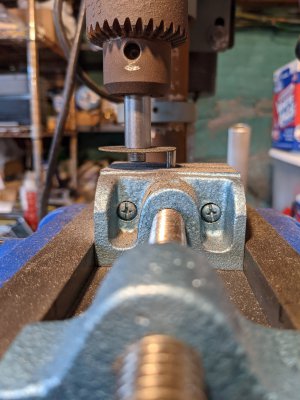- Joined
- Dec 20, 2012
- Messages
- 9,422
Rule of Thumb: keep it as simple and as rigid as you possibly can. The more parts involved, the greater the potential for disaster. Trust me; I speak from experience.
Another rule: don't be afraid to make mistakes. Your greatest lessons will come from them. Just try not to cut off body parts if you can avoid it. If you try something and you screw it up, just start all over again. I cannot count the number of times I've had to do this BUT I learned why something worked or didn't work and I rarely make the same mistake twice. This is how a hobby guy learns, from trial and error. Only so much can come from reading or watching videos; the real lessons come at the machine.
Another rule: don't be afraid to make mistakes. Your greatest lessons will come from them. Just try not to cut off body parts if you can avoid it. If you try something and you screw it up, just start all over again. I cannot count the number of times I've had to do this BUT I learned why something worked or didn't work and I rarely make the same mistake twice. This is how a hobby guy learns, from trial and error. Only so much can come from reading or watching videos; the real lessons come at the machine.


